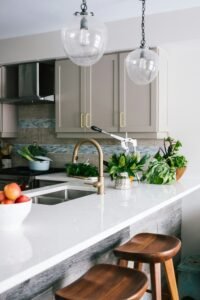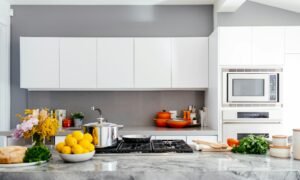Eco-Friendly Kitchen Practices: Reducing Waste and Going Green
In today’s world, where environmental concerns are at the forefront of global discussions, adopting eco-friendly practices in our daily lives has become imperative. One area where we can make a significant impact is in our kitchens. From reducing waste to minimizing energy consumption, there are numerous ways we can transform our kitchens into eco-friendly spaces. In this article, we’ll explore some practical tips and strategies for reducing waste and going green in the kitchen.

Embrace Meal Planning and Smart Shopping
One of the most effective ways to reduce waste in the kitchen is through meal planning and smart shopping. By planning your meals in advance, you can avoid overbuying ingredients and minimize food waste. Make a shopping list based on your meal plan and stick to it when you go grocery shopping. Choose products with minimal packaging or opt for bulk items to reduce packaging waste.
Opt for Sustainable and Locally Sourced Ingredients
Supporting local farmers and choosing sustainably sourced ingredients can have a positive impact on the environment. Look for organic produce, grass-fed meats, and sustainably harvested seafood. Buying locally reduces the carbon footprint associated with transportation and supports the local economy.
Reduce Single-Use Plastics
Single-use plastics, such as plastic bags, utensils, and containers, contribute significantly to environmental pollution. Instead of relying on disposable items, invest in reusable alternatives. Use glass jars for storing leftovers, stainless steel or bamboo utensils, and reusable shopping bags. These small changes can make a big difference in reducing plastic waste.
Compost Food Scraps
Food scraps account for a significant portion of household waste. Instead of throwing them in the trash, consider starting a compost bin in your kitchen. Composting organic waste not only reduces the amount of garbage sent to landfills but also produces nutrient-rich compost that can be used to nourish soil and plants in your garden.
Minimize Energy Consumption
Reducing energy consumption in the kitchen can help lower your carbon footprint and save money on utility bills. Use energy-efficient appliances and cookware, such as induction cooktops and pressure cookers, which consume less energy than traditional stovetops and ovens. Opt for natural lighting whenever possible and avoid leaving appliances on standby mode.
Practice Proper Food Storage
Proper food storage is essential for preserving freshness and minimizing waste. Store perishable items, such as fruits and vegetables, in the refrigerator to extend their shelf life. Use airtight containers to keep leftovers fresh and prevent them from spoiling prematurely. Be mindful of expiration dates and rotate items in your pantry to use older products before newer ones.
Cook with Leftovers and Scraps
Get creative in the kitchen by cooking with leftovers and scraps. Turn vegetable peels and trimmings into homemade broth or soup. Use leftover grains and proteins to make delicious stir-fries or grain bowls. By using up leftovers and scraps, you’ll not only reduce waste but also save money and minimize the need for additional ingredients.
Invest in Quality Cookware and Kitchen Tools
Investing in high-quality cookware and kitchen tools may require an initial investment, but it can pay off in the long run. Durable, well-made items are less likely to need frequent replacements, reducing waste over time. Look for cookware made from sustainable materials, such as stainless steel or cast iron, and choose multipurpose tools that serve multiple functions to minimize clutter in your kitchen.
Practice Portion Control
Overeating not only contributes to health problems but also generates food waste. Practice portion control by serving appropriate-sized portions and avoiding excessive leftovers. If you find yourself with extra food, consider freezing it for later use or donating it to a local food bank or shelter.
Educate Yourself and Others
Finally, educate yourself and others about the importance of eco-friendly kitchen practices. Share tips and resources with friends and family, and lead by example in your own home. By raising awareness and encouraging others to adopt sustainable habits, we can all work together to create a healthier, more sustainable future.
In conclusion, adopting eco-friendly kitchen practices is not only beneficial for the environment but also for our health and well-being. By reducing waste, minimizing energy consumption, and making mindful choices about the products we use, we can all play a part in protecting the planet for future generations. Let’s commit to making our kitchens greener, one sustainable step at a time.
Eco-Friendly Kitchen Practices: Reducing Waste and Going Green Read More »




